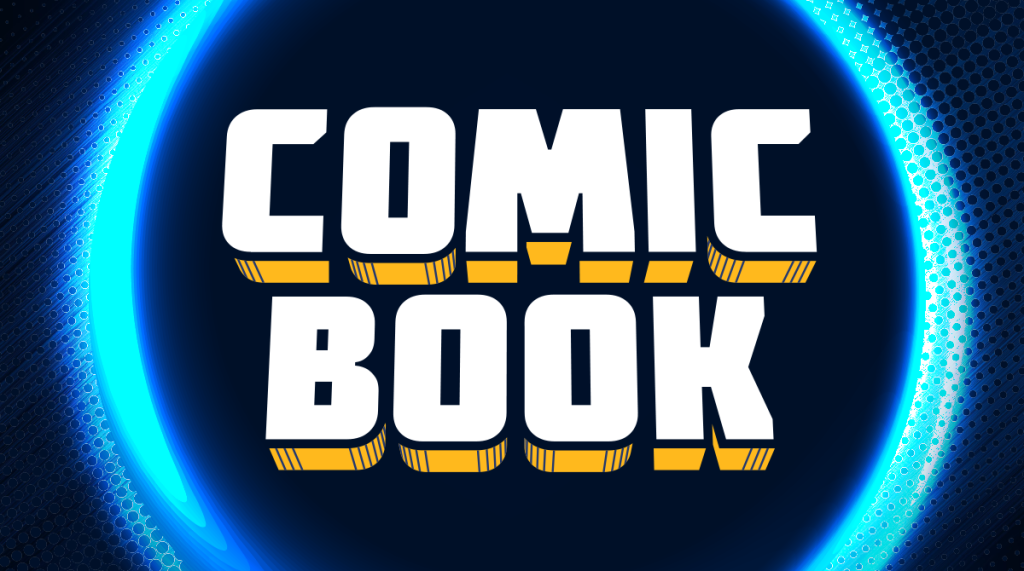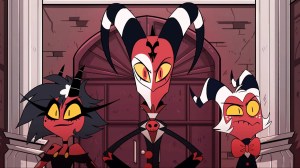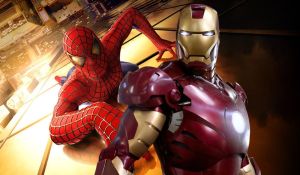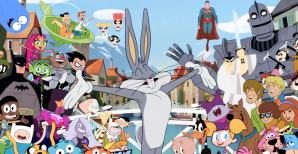DC has been doing an inspired job of bringing a lot of material that had never been previously reprinted back to the market in recent months and years.
Videos by ComicBook.com
Using John Byrne’s 1986 reboot The Man of Steel as a jumping-off point, the publisher has released a batch of Superman: The Man of Steel trade paperbacks, the ninth and final of which was just released. That brings fans who either missed the Byrne/Marv Wolfman/Jerry Ordway era right up to the edge of where Byrne left the titles and set the stage for Superman’s Exile storyline.
Now that the The Man of Steel volumes are done, the era dominated by Ordway’s voice rather than Byrne’s will apparently be reprinted in a series of books called Superman: The Man of Tomorrow. Long-running and fan-favorite runs like Nightwing by Chuck Dixon, Azrael by Dennis O’Neill, and Green Arrow by Mike Grell are being released in similar volumes, with Green Lantern: Hal Jordan (collecting Gerard Jones’s early ’90s work) and Batgirl: Stephanie Brown among some of the more recent sightings on Amazon’s advance solicitaitons.
Meanwhile, creators are getting top billing in a series of trade paperbacks like Greg Rucka’s Wonder Woman, Geoff Johns’s The Flash, Kevin Smith’s Green Arrow, The Flash by Mark Waid, and Geoff Johns’s Justice Society of America.
The holes they’re filling are, in many ways, pretty obvious. The trade paperback market for mainstream superhero comics didn’t really emerge until after Watchmen and didn’t come into its own until after The Death and Return of Superman. It wasn’t until the late ’90s and early 2000s that Marvel and DC were regularly collecting and reprinting every book that came out, which means there are decades of pre-Watchmen and years of post-Watchmen work that hasn’t seen the light of day since it was first published in individual magazine format.
The pre-Crisis on Infinite Earths stuff tends to be reissued in treasury editions branded for its era of publication, especially since until around 1975 or so there was rarely much of a tight continuity in DC books, so the volumes don’t read like books but like short story anthologies.

So we’re using the post-Crisis on Infinite Earths era as a point of demarcation (with one major exception) and looking at what major runs remain un-reprinted and, as far as we know, unscheduled.
We’re going to leave certain things off the list: Dan Jurgens’s Superman is a remarkable run, but it’s part of what is likely to be the Man of Tomorrow line of trade paperbacks, for instance. And Peter David’s Young Justice run looks to be on the schedule for trades starting in April.
We’re also looking for runs that lasted a bare minimum of 2 years. If DC is going to commit to a trade paperback line, that “line” should be at least two volumes or it’s unlikely that it would generate enough money to justify itself. There are plenty of thigns we’d like to see collected that didn’t last that long — Scare Tactics, anyone? — but we’ll find those on another list, on another day.
So read on, and let us know if we missed any of your favorites.
(Or if we missed any that have been solicited/teased. Because we’re totally down with buying any of these that turn out to be hidden somewhere on the internet.)
GREEN ARROW By CHUCK DIXON

Similar to something we’ll see later on in the list, it’s distinctly possible that this one is on its way.
With Mike Grell’s run on Green Arrow being collected in trade, it would make sense to continue through the Chuck Dixon years, since between the two they totally redefined the character and set the stage for what would become much of the foundation of Arrow years later.
We’re still quite a ways off from that in the history of what’s actually being reprinted in the Green Arrow trades featuring Grell’s work, and since Grell’s is the name that’s most commonly associated with the TV show and Dixon has made himself somewhat infamous at DC in recent years, blasting the publisher in the media over political disagreements, it’s difficult to say with any degree of certainty that the publisher will absolutely continue through the Dixon run.
But they really, really should. It’s some great stuff, with a handful of really talented artists working with him, and like the Nightwing material currently in circulation it gives a good sense for the post-Crisis, pre-Infinite Crisis identity of the DC Universe.
MANHUNTER By MARC ANDREYKO

Marc Andreyko’s Manhunter was a bit like James Robinson’s Starman — which is some of the highest praise you can give a mainstream superhero comic.
The series centered on a new Manhunter, but acknowledged the old, and in fact took some of them off the table in a surprising way during one of its earliest storylines, establishing ties that didn’t previously exist between the generations of characters who used the name.
It also breathed life into an Island of Misfit Characters that included the DEO, Cameron Chase, and Director Bones — who had been relegated largely to the DC Universe’s sidelines for years before Manhunter and who re-emerged as big players during Andreyko’s run.
Not only is about half of the series not yet available digitally, but the trade paperback collections are long out of print, and even they didn’t include some of Andreyko’s Manhunter stories, which were moved to a backup feature in Streets of Gotham at one point.
THE OUTSIDERS By MIKE W. BARR

Mike W. Barr recently revisited Katana — a character he co-created — in a Suicide Squad-themed miniseries, but when that comic came out, all we could think about was the years he spent on The Outsiders.
The title was emblematic of something DC was doing really well at the time: taking one or two recognizable characters and teaming them with an eclectic gang of also-rans and never-wases to create some of the most compelling superhero and antihero comics on the market.
There are some Batman and the Outsiders collections on the market, but the post-Batman stuff, including years that made fans care about characters like Geo-Force and The Eradicator, are largely still missing.
GREEN LANTERN By RON MARZ

This one’s…kind of a cheat?
While there are no apparent plans to make a “Ron Marz’s Green Lantern” run of trade paperbacks, DC is currently soliciting Green Lantern: Hal Jordan, the second volume of which just popped up on Amazon.
It seems likely that, since most contemporary readers have only a passing familiarity with Gerard Jones by name and the Ron Marz run was followed up by an almost-equally-successful Green Lantern run by Judd Winick, this volume will eschew creator names and instead reprint the post-Crisis stories of Green Lantern starting with Emerald Dawn and running through the Kyle Rayner era, which includes Marz, Winnick, and some others.
That said, Marz had a lengthy run that began with his creation of Kyle Rayner and was one of comics’ biggest (and most divisive, at the time) names for much of that period. For many people who were reading comics in the ’90s, it’s every bit as much “Ron Marz’s Green Lantern as it is “Mark Waid’s The Flash.”
For most of that run, he was joined by artist Darryl Banks, Rayner’s co-creator and the penciller with the unenviable task of following M.D. Bright as the series’ regular artist. His keen eye for design and storytelling made the book stand out among DC’s publishing line, and there’s a reason why so many of his designs survived the ’90s and are still being used in the Green Lantern titles. (h/t to Brian Thomer who asked where the Darryl Banks love was)
Besides which — nobody has officially said anything at all about the future of the Green Lantern: Hal Jordan volumes, which may end with Emerald Twilight and never continue into a Green Lantern: Kyle Rayner line. Our assumption that it will is rooted primarily in similar types of books — like the Superman: The Man of Steel and Superman: The Man of Tomorrow lines. So on the off chance you’re wrong, this entertaining and groundbreaking era in the comic’s publishing history absolutely deserves a spot on the list.
THE SPECTRE By JOHN OSTRANDER

A couple of volumes of the 1992 The Spectre series have already been recently reissued, but the idea that most of John Ostrander and Tom Mandrake’s character-defining run on the supernatural superhero isn’t available in print is kind of crazy to a generation of readers who grew up feeling like this book had just never not been on the shelves.
Ostrander and Mandrake took the character and did cool, creative things with it, inspired by the then-recent Alan Moore reinvention of Swamp Thing and other supernatural corners of the DC Universe that were becoming increasingly separate from the superheroics of the Justice League.
And it did well enough that not only did it run for years, but the pair got a chance to do similarly experimental and heady work with Martian Manhunter along the way.
We’ll also give an honorable mention here to The Spectre by J.M. DeMatteis. Following the events of Geoff Johns’s Day of Judgment miniseries, Hal Jordan was no longer dead, but had taken the form of The Spectre, God’s avenging angel. The series saw Hal grapple with his own sins (the whole going crazy and killing the Green Lanterns thing) and trying to redefine what it means to be The Spectre, when you’re not a cop but a hero at heart and much more reluctant to use deadly force.
DeMatteis’s run, with art by the likes of Ryan Sook, is not generally considered a defining element of the character in the way that Ostrander’s is…but it was a well-executed book that gave fans who had been reading since Emerald Dawn a real sense of closure that Green Lantern Rebirth mostly did not, since that story absolved Hal of responsibility for what happened during the Marz era.
SUPERBOY By KARL KESEL

The post-Crisis on Infinite Earths Superboy is an odd character. In an era where Superman didn’t develop powers until adulthood, the publisher had to come up with a reason for there to be a different character called Superboy…and they opted to have one who coexisted with the Man of Steel so that for the first time, he could team up with other popular teen heroes of the modern-day DC Universe like Young Justice and the Teen Titans.
Eventually he would become a pretty standard Superman stand-in, but for years, the Cadmus-created “clone Superboy” had a personality, a mythology, and even an aesthetic that was all his own. And for most of that time, he was defined by writer Karl Kesel and/or artist Tom Grummett, who co-created the kid when he first appeared in The Adventures of Superman shortly after Superman’s death.
In spite of the strangeness of his backstory, Superboy’s adventures themselves hold up remarkably well, likely helped by the fact that Grummett’s art is stellar. This series deserved a reprint even before DC started reprinting everything they could think of. Now that the process is well underway, let’s have it already!
AQUAMAN By PETER DAVID

…Wait, is there a reason this hasn’t been collected?!
Seriously — of all the incredibly entertaining and eminently marketable books on this list, the omission of Peter David’s Aquaman from DC’s collected editions library is the most baffling.
So baffling, in fact, that this is a late addition becuase we had believed and assumed that David’s run was available until several people called to our attention the fact that it wasn’t.
Taking over following his origin-tweaking Time and Tide story, Peter David went on to write Aquaman for nearly fifty issues and become the defining voice on the character probably until 15 or so years later when Geoff Johns joined the book for The New 52.
David’s run is polarizing, and some longtime Aquaman fans are frustrated by the wayshe changed things to attract new readers — but it worked. Aquaman became a book that people talked about regularly, and that could attract casual fans in a way that it hadn’t been able to do in years.
The fact that David had some top tier art on the book — including Jim Califiore, whose ultra-detailed, super-stylized way of drawing was perfect for the bizarre visuals and unique needs of undersea storytelling — was certainly a huge help.









